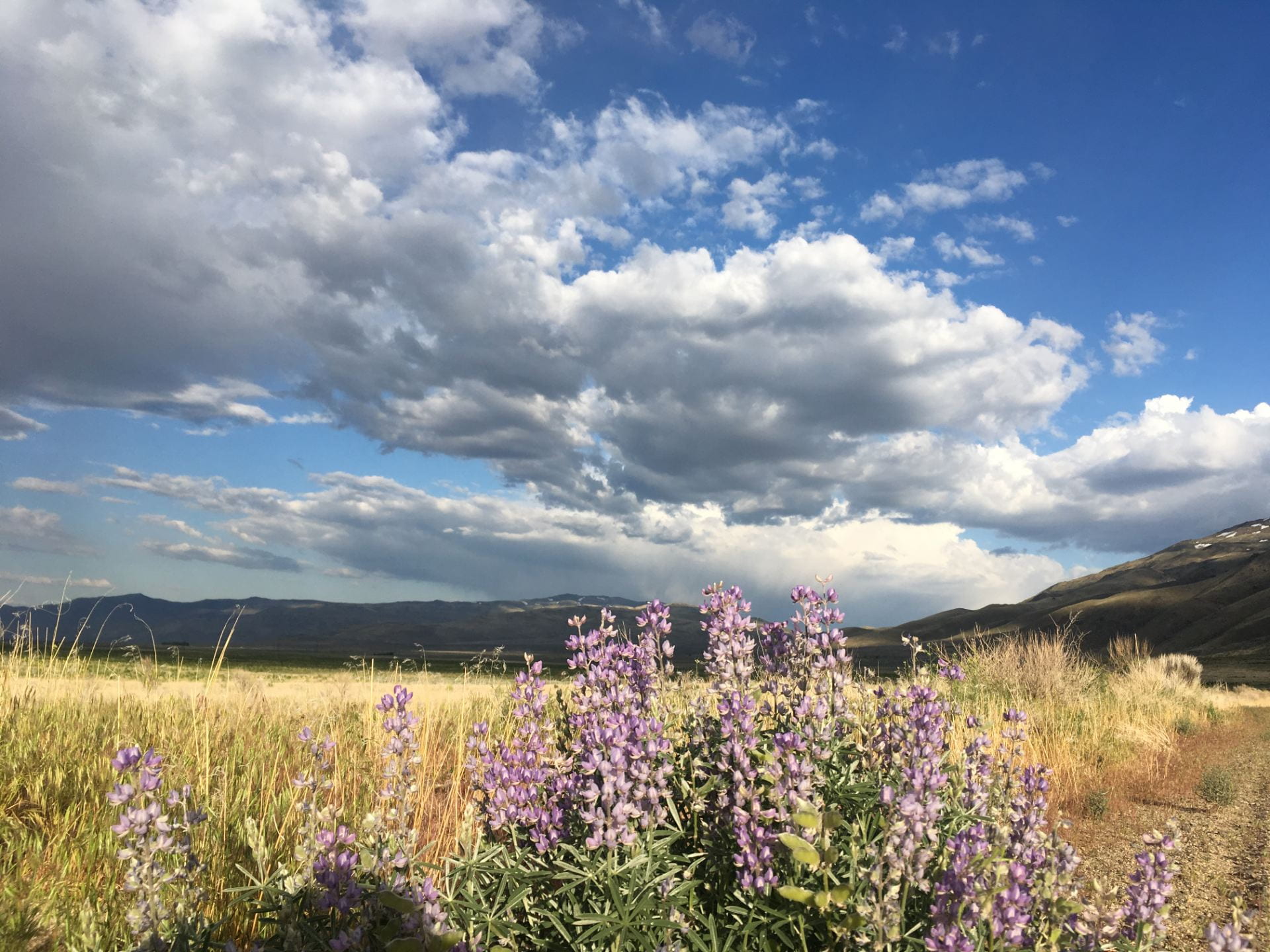My first adult job after graduating from SDSU begins in the Northeastern Californian town of Susanville. I am working as an environmental field technician for NatureServe, which is a national network of scientists collecting critical information about the health of our public lands. This data is used to cultivate an ecological snapshot of our nation’s biodiversity, which will be used to make informed decisions about the future of our natural resources. I follow the Assesment, Inventory, and Monitoring (AIM) Protocol set forth by the Bureau of Land Management (BLM).
A day in the life
- Each shift consists of eight-day “hitches”, which requires camping each night in various locations around Lassen County. I work with three other wonderful plant enthusiasts, who are ALMOST as weird as I am. Before starting the workday at 7am, I must pack up my tent and eat breakfast.
- Then, we split up into pairs and set off for a plot. These are marked GPS points that have been established years prior. Some plots have been burned in wildfires and are being monitored for how the vegetation recovers. Each plot can take anywhere from 3 to 5 hours, depending on the amount of bare ground and density of vegetation. After lunch, we all meet back up to complete a different plot together.
- So what do we do at a plot anyways? There are about ten different monitoring protocols to complete, plus additional supplemental methods catered specifically for the ecological region of study. Our methods include Line-point Intercept for composition, Gap Intercept for distribution of bare ground, Species Inventory for biodiversity, Soil Stability for water erosion information, Plant Production, Plot Characterization, and Plot Observation. At every plot, we record GPS coordinates of all transects and take photos of each transect for a visual record. Our data is entered on field tablets within the Database for Monitoring, Inventory, and Assessment (DIMA).
- When the workday ends around 5pm, we head to our campsite for the night. One night of every hitch, each person is expected to make dinner for the whole group. I have grown to love these shared group meals because as the hitches progress, so do the complexity and deliciousness of the dinners. I am beginning to think my coworkers are secretly expert chefs because of the magical meals they produce: peanut sauce veggie pad thai, fried hard shell tofu tacos, gourmet veggie quesadillas. The first hitch I made elbow chickpea pasta with alfredo sauce and onions and mushrooms. Now on the third hitch, I’ve stepped up my game and will be making pesto garlic pizza with mushrooms and onions and sundried tomato. Not going to lie, the best part of this job is enjoying yummy meals with good company in a beautiful place at the end of each day.

Challenges
- So far I’ve worked two hitches, and I have been challenged both mentally and physically. I have been pushed to my limit and felt like quitting, but I know that I can not give up that easily. All my coworkers are multiple years ahead of me in life experience and education. My lack of formal education in plant taxonomy is my shortcoming that leads to a lot of frustration and confusion in the field. At first, I was incredibly discouraged by my lack of knowledge. Slowly, I am learning to replace these emotions with an intense curiosity to learn. Embracing humility is key if I want to grow.
- An unexpected challenge is coping with radical diurnal changes in weather on a daily basis. We work outside all day in a high desert mountainous area devoid of shade. Afternoon temperatures climb easily to 100 degrees, and night temperatures can drop to 40 degrees. During the second hitch, it rained and thundered for nearly the entire eight days. Working outside in the cold rain chilled me to my core, making it difficult for me to think properly and even move efficiently. However, all my coworkers were experiencing the same wet weather, so I kept pushing past these debilitating feelings. When the sun did return at the end of that hitch, my perspective of hot sunny days dramatically shifted towards gratitude.

When its pouring, we take cover under the tarp in the field
Flower Friends









Creepy Crawly new friends










Home sweet home























What lovely close-ups! It feels like we’re right along with you, minus the weather challenges, dirt, sweat, & crawly things… =). Thanks for sharing your journey us! We love you!
-Momma